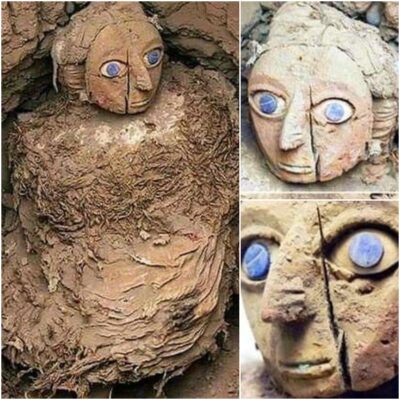In May 2022, while searching with local collector Zhang Yumu, Zhou Wenbo, a member of the whale fossil excavation team at the Institute of Archeology of National Cheng Kung University, found four whale fossils. Whale ribs protrude on the ground deep in the forest.
After some digging, they contacted researcher Yang Zirui at the university, Newsweek reported on December 6.

The jawbone of a whale is longer than an adult human. (Photo: NCKU).
The nearly 70% complete fossil is estimated to belong to a great blue whale or fin whale that lived about 85,000 years ago. The shoulder blades, jaw bones, the back of the skull and the tailbone are all intact, according to a statement from National Thanh Cong University.
Whales evolved from terrestrial animals, diverging from a common ancestor, the hippopotamus, about 50 million years ago. Blue whales, the largest animals that have ever existed on Earth, can grow up to 30m long, followed by fin whales with a length of 26m. The oldest specimen of a modern blue whale ever found is a skull fossil from southern Italy. Blue whales and fin whales are evolutionary related, evolving into separate species from a common ancestor about 3.5 million years ago.

Ancient whales are not gentle
The Tougou area in Hengchun is a fossil hotspot. Many fossils of shells, sharks, crabs and whale bones have been discovered there. The whale fossil specimen more than 15m long was unearthed in 90 days by Yang, an assistant professor at the Department of Earth Sciences at National Thanh Cong University as well as researchers from the National Museum of Natural Science. and a group of students at Chengdu University of Technology.

Ancient whales are super shark Megalodon’s nightmare
A total of 8 people transported the skeleton on a wooden stretcher over the rough and dense terrain of the forest. Currently, the fossil is stored at the National Museum of Natural Science. According to the university, the whale’s jawbone weighs 334kg and is 223cm long. Zhuang Jingren, a volunteer rescuer, said he had never seen a jawbone longer than 98cm.
The skeleton represents the second largest mammal fossil in Taiwan, after the 1971 rhino fossil. The skeleton located at Ta Zhen belongs to the hayasaka rhino, which lived only in Taiwan during the Pleistocene epoch of 11,700 years. to 2.5 million years ago.
The team of experts at the museum will continue to clean the whale bone specimen. Scientists hope to be able to study more fossils to better understand how whales have adapted to environmental changes from the ice age to the present.











